What to Say When People Complain About Bicyclists
Studies consistently show drivers are at least twice as likely to break the rules of the road as bicyclists.
Lately there has been a lot of media chatter suggesting people who ride bikes are notorious scofflaws. Last Friday our fearless leader Dave Cieslewicz jumped into the fray and referenced the broad spectrum of complaints from the anti-bicycle tweets from NPR’s Scott Simon to comments from Rush Limbaugh’s jokes about opening his door in front of people on bikes.
I have to confess that I wrote a headline for that post and added the WWII rationing posters that probably gave it a bit more of a controversial tone than he intended. That said, I left the body of his post alone in which Dave clearly made the point that since much of the anti-bike chatter has more to do with politics than facts, perhaps the best thing we can do to change the dialogue is be even more law-abiding than we are.
“Maybe the best thing we can do to cool the tension is just to take the thirty seconds and actually come to a complete stop when the rules call for it.” – Dave Cieslewicz from Friday’s post Are bicycles the latest weapon of neoconservatives?
Since these anti-bike screeds are more about politics than facts, I doubt it would help even if everyone on a bicycle obeyed all the laws all the time. Don’t get me wrong, like Dave, I obey the rules of the road whether I am on a bike or in a car, even though my respect for the speed limit irritates passengers and people in cars behind me when I am driving. I also encourage others to do the same, which also annoys people who ride bikes with me and those who give me a lift and have to listen to me ask them to slow down or stop for pedestrians.
Despite Dave’s personal pledge to obey the law and his suggestion that other should try to become even more law-abiding, one reader commented that bikes just don’t belong on most roads:
“…bicyclists seem to think they have no accountability, all the burden is put on the motorists, when the bicyclist has none what so ever ( sounds like a special privilege to me) they seem to think they can do what they want.
I am not anti-bicycle, I just want them prohibited from highways/rural roads…”-Brian
Another reader suggested what we really need to dialogue with people like Brian are better talking points.
“You suggest some ways to improve your own behavior behind the wheel and on the bike, but you offer no solutions for improving broader driver-cyclist relations. Why not give some talking points for conservative and liberal cyclists to share with their non-cycling conservative friends the next time the topic comes up?” – Withheld
I have written a few blog posts in the past in which I cite traffic studies to prove people on bicycles do not violate the laws in any greater numbers than people in cars, and others have written similar articles, but perhaps it can’t hurt to share those facts again. So here you go, some more facts and talking points you can use to respond when someone complains to you about scofflaw urban hipsters on bicycles.
Although so many people shared actual facts about cycling with Scott Simon that he retracted his anti-bicycle tweets, let’s use his comment as an example to generate appropriate responses.
Suggested response: Lance Armstrong aside Scott, on your walk through downtown, did you count how many people walked across the street even when the light at the crosswalk says don’t walk? On that same walk, were all the cars that passed you going the speed limit? Really Scott, people are people and some of them are going to break the laws they can get away with breaking if it gets them where they’re going faster, whether they are on foot, on a bike or in a car. Some people in cars will speed; some people will walk when it says “Don’t Walk”; and some people on bicycles will run stop signs or red lights.
When I worked as the City of Milwaukee Bicycle Coordinator, I did similar counts at other locations. The highest percentage of violators I found was at the intersection of Water Street and St. Paul Avenue, where I recorded 48 percent of people on bicycles either rode on the sidewalk or ran the red light.
If between a fourth and half of people observed in these studies broke some rule of the road, isn’t it fair to say cyclists are scofflaws? No, it is not fair because compared to the percentage of people who drive over the speed limit, roll through stops, or fail to yield to pedestrians in a crosswalk, people are more law abiding when they ride bicycles
Facts to back up the response: As the person who used to manage the neighborhood traffic safety program for the City of Milwaukee, I had dozens of meetings in all parts of the city with neighborhood groups with complaints about motor vehicles speeding, failing to stop for stop signs, and failing to yield to pedestrians. For each of those complaints, we had traffic engineer interns conduct speed studies or crosswalk studies. The City also used unobtrusive radar units (not speed boards) that count and measure the speed of every vehicle. The vast majority of those studies resulted in a bell curve like the one below, which shows about 65 percent of people driving above the legal speed limit. Most drive 5 to 10 miles per hour over the limit, but some race as much as 25 miles per hour above the posted limit.
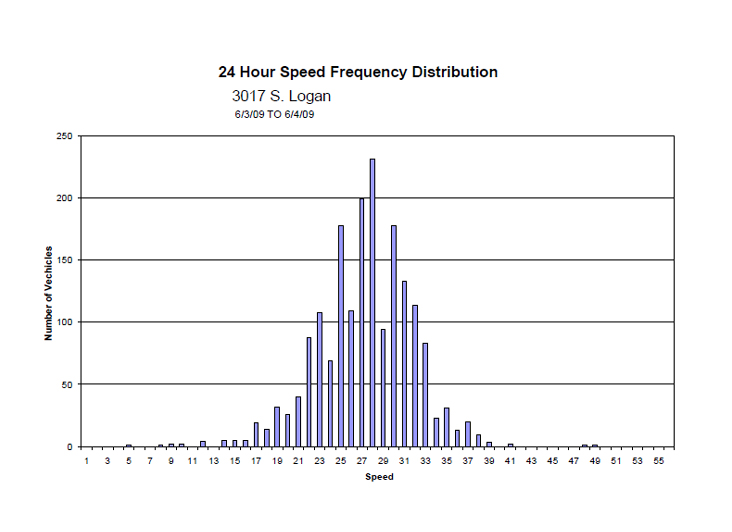
Most speed studies look like this (posted limit of 25mph) and show the majority of drivers exceeding the posted speed limit., some by extreme amounts.
Even worse are the studies of how many people in cars yield to people trying to cross the street at crosswalks. These statistics are frightening, with some studies showing nobody would stop to let our subject cross the street, and even in the best case, only 23 percent of cars obeyed the law requiring them to yield to let people in a crosswalk. Put another way, between 77 percent and 100 percent of people driving in cars broke the law.
There are lots of other national, state and local traffic studies that illustrate how frequently people ignore traffic laws when behind the wheel. In 2006 and again in 2007, the Portland Transportation Department did traffic studies at intersections controlled by stop signs and that determined people on bikes came to a complete stop 7 percent of the time and people in cars 22 percent of the time. Yes, people were more likely to roll a stop sign on a bicycle than in a car, but both modes had pretty dismal compliance rates. Stop signs are only supposed to be used to control right of way, but many have been installed in a misguided attempt to stop speeding. We now have so many unwarranted stop signs that were installed to try to stop speeding in neighborhoods, it is no wonder people tend to ignore them whether they are on a bike or behind the wheel.
Bicyclists are dangerous to pedestrians because they ride on the sidewalk. Studies do show that riding on the sidewalk is dangerous, but primarily for the people on bicycles, and while it may be annoying or scary for people walking, the risk is really very low.
While it is not unheard of for a person on a bicycle to injure or even kill someone walking, it is extremely unlikely. The CDC reports that 59,925 pedestrians were killed by motor vehicles between 1999 and 2009, while bikes only killed 63 in that same period. Another way to look at it is deaths per mile traveled. Fatal crash rates are measured in deaths per billion miles traveled, with 1.71 people killed per billion motor vehicle miles traveled.
We don’t study bicycles like we do cars and trucks, so data on miles traveled is harder to come by. The advent of big bike sharing programs like CitiBike in NYC, has given us an excellent and growing data source. So far, in the 15 million miles traveled by CitiBikes, no pedestrian has been killed. As popular as the program is in Gotham, it won’t be long until we have a billion miles and we can compare the rates.
Riding on a sidewalk certainly is a bad idea and while it might be annoying or even frightening to people walking, it is actually legal in some municipalities in Wisconsin. Most crashes happen at conflict points and every driveway and intersection is a conflict point. When you factor in that people in cars don’t look for bicycles on sidewalks, it is generally much more dangerous than riding on the road. Even though it is more dangerous, some people ride on the sidewalk because they are afraid to ride in the street. Bike lanes help and reduce the percentage of sidewalk riding, but protected bike lanes are the really the only way to get those who are afraid to ride next to motor vehicles to use busier roads.
2012 NYC DOT study of New York City’s protected bike lane on 9th Avenue showed a 56 percent reduction in injuries to all street users, including a 57 percent reduction to people on bikes and a 29 percent reduction in injuries to people walking, as well as an 84 percent reduction in bicycling on sidewalks
I hope this post gives readers some reasonable responses to typical complaints about the misperception that more people flout the law when they ride bicycles than when they drive motor vehicles. I also hope the facts will begin to stick someday so I don’t have to keep repeating them.
I’m under no illusion that if the statistics I shared above were more well known, everyone would like bicycles. People are entitled to their own opinions, but not to the own facts.
This story was originally published by the Bicycle Federation of Wisconsin.
Bike Czar
-
Join a Bike Ride Under the Polish Moon
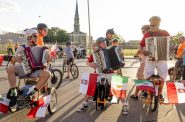 Jun 1st, 2018 by Dave Schlabowske
Jun 1st, 2018 by Dave Schlabowske
-
9 Reasons to Join National Bike Challenge
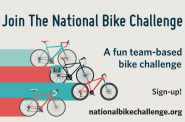 May 4th, 2018 by Dave Schlabowske
May 4th, 2018 by Dave Schlabowske
-
Biking Through the Mindoro Cut
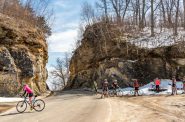 Apr 27th, 2018 by Dave Schlabowske
Apr 27th, 2018 by Dave Schlabowske



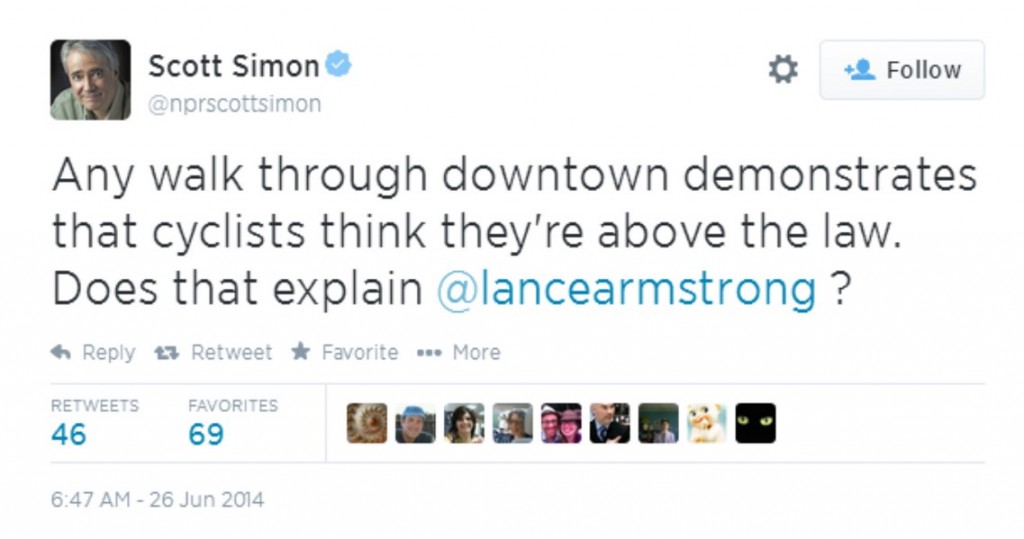

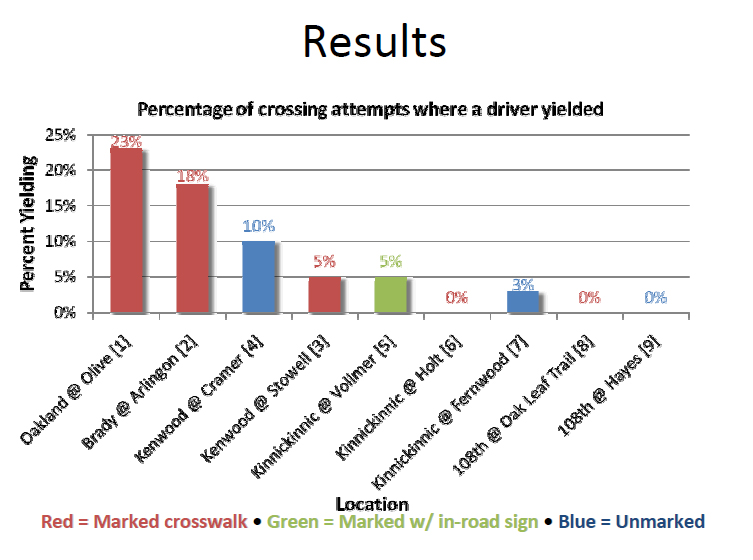


















Coming from an avid bicyclist, bike riders break the laws just as much as motorists do, if not more. It’s frustrating and it gives people like me, who follow the rules of the road, a bad rap. Blowing stop signs, running red lights, weaving in and out of traffic without signaling, etc.
I’m extremely uncomfortable with our response essentially being that it’s ok because car drivers do it too. For me we have two separate and concerning problems. 1. Many bicyclists break the law and put themselves and others in danger. 2. Automobile drivers break the law and put themselves and others in danger. Those two items are not related in my mind. I get angry when a bike rider darts out through a red light, and I get angry when a car does not yield for pedestrians. One of those does not make the other ok…
As I am constantly telling you, Dave… we need to move the discussions away from comparing bikes and automobiles. That’s the only way we can make headway in improving the culture around both.
Nobody at the Bike Fed ever said it was OK for anyone to break the law ever. We never have, never will and we do more than just be the change we want to see in others. In fact, about half of our total budget and most of hour staff are dedicated to teaching kids and adults how to ride bicycles legally and to encourage all road users to do the same through our Share & Be Aware encouragement program. That is what we do every day in municipalities across the state.That is our message every time we are featured in the media. We also try to break down misperceptions, false stereotypes and share fact-based information. While we generally avoid flame wars with trolls, we do sometimes respond when high profile individuals make false claims about cycling.
Understanding why some people break the law in general is equally important as understanding why people break specific laws. The fact that some people run red lights on bikes, some people speed in cars, and some people walk when the light says don’t are related. What if we asked that question and found out the same people who blow stop signs on bikes, walk against the light and speed when behind the wheel? Perhaps the problem is not specific to bicycles or cars, but simply a fact that some people do not obey traffic laws.
Our attempts to get people to stop speeding and yield to people at crosswalks have been woefully ineffective despite massive resources spent on them. Before we spend more money trying to enforce other common violations, we need to look at the root cause of the violations and consider changes in education and engineering, enforcement and encouragement and then do an evaluation of effectiveness.
Further, since the funding for bicycling, walking, driving and transit are all discussed at the same time and all fight for the same dollars and as well as the same space on the road, it is inevitable that comparisons will be made.
That said, if you notice, I make every effort to avoid using terms like “drivers” or “bicyclists” or “pedestrians.” If you notice, I talk about “people” when they drive, bike and walk. I stand by my statement that people tend to break laws they can get away with breaking if doing so gets them from point A to B faster. That is not an excuse, simply a theory that suggests we change the way we enforce our laws, engineer our transportation network, and educate people about using that network.
I feel your pain Justin, and understand that sometimes it is hard to be the change you want to see in others. I find it helps me to remind friends and family when they are breaking the laws. I bug people when I am in cars if they are speeding. I remind people when I am on a group ride that I plan to stop for red lights, and I pester people to ride on the paved shoulder or bike lane if there is one. I think because I take that extra step of encouragement for others, it doesn’t bother me as much when I see other people in cars speeding or people on bikes breaking a law. The fact that I am actively trying to change other people’s behavior in addition to doing the right thing myself seems to lessen the personal annoyance and helps me put other people’s bad behavior in perspective.
I just mention it politely, like this I am a passenger in someone elses car, “you know, I have spent a lot of my life attending night meetings where people complained about speeding on their street. Funny how so many people complain about something they do.” or “Just so you know, I don’t run red lights unless they won’t change for bicycles” at the start of a group ride.
I have to admit though, my policy does not make me popular with everyone and I try not to harp on it.
I would agree with Andy here. Just because people in cars break the laws, doesn’t mean it should be expected the people on bikes will break the law. I think there should be stronger education on how to ride bikes on city streets. The fact is that a lot of people just don’t know so they do run red lights, coast through stop signs, etc. I think the city should mail out a pamphlet on it with property tax bills or something. Motorists need to learn how bike laws too, even if they never ride a bike.
Additionally, I think that addition of more bike lanes is necessary. I will admit that I get really frustrated with bikers (even when they’re following the laws) driving through Walker’s Point on 1st street. They’re putting their own life in danger because the road is busy and tight. Ideally, they should take the bike route that is set up on 2nd street and has a bike lane.
The other thing that would help is if police would actually ticket and educate both people on bikes and people in cars for minor infractions. I think the ticket needs to be relatively cheap, like $20-50, and given to a lot of people so that they learn to follow the same guidelines.
@partypanther….You beat me to it. I totally agree that bicyclists should also get tickets on the road. But I think the ticket for running a red light on a bike should be the same as running one in a car. No cop will ever pull a bicycle over though so thats a moot point.
@Justin A, police do in fact give tickets to people riding bicycles who break laws and the ticket is the same as if the person is in a car. They also give tickets to people who cross against the walk light. So while your statement is completely incorrect I would encourage you to request that data, which is your right. I suggest you ask for all tickets given for bicycling, walking and driving from the police, then sort out the number of tickets given for speeding on city streets, for failing to yield to pedestrians, you could also include other violations if you like, such as ho headlight, driving without a license, DUI, etc. Then you should write up your findings and share the study with me. I’d be happy to publish it.
Unfortunately the MPD is understaffed as is. They just do not have the resources to actively police a lot of minor traffic violations (bike or car). Studies show that enforcing minor violations goes a long way in improving observance of those laws (seat belt laws for example), but since we already have hour+ response times on non-emergency calls I just don’t know how we could make that happen.
@Dave….I get what your saying and I’m sure bicyclists and pedestrians do get some tickets (I really don’t have the time nor the willpower to research this) I’m just saying that I have never seen a bicycle or pedestrian pulled over by a cop.
@Andy…You are correct. They apparently don’t have the resources to stop any crime whatsoever, or they just don’t care to stop it. The MPD is a joke and a sad waste of tax money.
@Justin I disagree that fines should be the same. I think that the reason people aren’t ticketed all too often for walking against lights, jaywalking, running a red light on a bike, etc. is because police acknowledge that the punishment doesn’t fit the crime. They’re apprehensive to hand out a $200 fine for something that really doesn’t hurt anyone.
@Andy What if we deputize the crazy amount of parking checkers and let them write some tickets? They’re already hated as it is!
@Andy, I get what your saying but speeding in a car doesn’t really hurt anyone nor does running a red light if no one is around. A bike running a red downtown could just as easily nail and injure someone crossing the street as a car can.
@partypanther Sorry my last comment was for you not Andy. But I forgot to acknowledge the 2nd half of your comment. Are you suggesting that we should decrease the amount of parking checkers on patrol and instead have those officers write tickets for bike/pedestrian infractions? If so, genius! Also hilarious! I would find tons of amusement in watching people get pulled over on foot for jaywalking. But, I would be pissed if I got a ticket for that, I often jaywalk and cross when it says don’t cross.
I don’t get to downtown or surrounding neighborhoods as much as I used to (though I’m still in those areas at least a few times a month). Are bikers really that much of a nuisance, running reds and stop signs and cutting people off? I have not experienced that at all, either when I’m in or near downtown or in the areas I drive on a daily basis. Other cars are far, far more of a nuisance, mainly due to the fact that every other driver is on their cell phone. I had a serious scare the other day. Driving home with my son, in a residential area around 4:30 in the afternoon, a woman talking on her phone ran a stop sign. I swerved hard to the right and she slammed on her brakes just before nailing us. It was way too close for comfort. That stuff really shakes you up. In my experience, drivers yacking on their phones are way more hazardous than bicyclists, but maybe it’s different for people who drive downtown every single day.
To the laws that drivers break. If most of your studies look like that bell curve, it may say more about what the appropriate speed is on that road than people’s propensity to speed. Start out in eastern MN on I-90 sometime and drive west. For the most part people’s speed doesn’t change even as the speed limit increases from 65 to 70 to 75 to 80. The difference is that in eastern MN they are breaking the law and in western SD they aren’t.
As for the pedestrian issue. I think the biggest problem with not yielding to pedestrians is A) misunderstanding of the law and B) culture. Young drivers are not raised to yield. They don’t know any better and they don’t yield. And I have heard two different interpretations of the crosswalk rules. If someone is IN the crosswalk I’m yeilding. If they are standing on the corner I’m not because I don’t know what their intent is.
And I think the biggest problem drivers have with bikers is the “holier than thou” attitude. I don’t have problems with people breaking the rules. If you’re on a bike, go ahead and run the stop sign – IF no one was there first and IF no one is coming. I don’t care it’s your funeral. I don’t condone that for cars because it’s someone else’s funeral.
IDAHO STOP! IDAHO STOP!!!
Guys – learn about the Idaho stop: http://en.wikipedia.org/wiki/Idaho_stop
Solves many, many of these problems. At least in a legal sense. Makes much more common sense than most of the blabber I hear people uttering. I have zero problem rolling stop signs as long as no one is around. If someone is coming, I will most definitely come to a stop. That’s the way it should be.
Tyrell, while Idaho stop may be the way laws should be, that’s not the way they currently are. Just like I can’t go 90 on I-43 just because there’s no speed limit in Montana.
I’m downtown daily, and I’ll admit that I see more stupid drivers than stupid bikers. My issue is that the stupid drivers are pretty easy to spot, but the stupid bikers are not. I’ve had to dodge both while a pedestrian in a crosswalk. But my bigger issue is with bikes while I’m driving, specifically because I’d rather not kill someone. I’m losing track of the number of times at night a bike with no lights on the sidewalk darts into traffic in front of me. Eventually, one of them is going to get hit. And I have no doubt I’ll be able to read about how irresponsible the driver must have been right here on this site.
If 48% of cars ran red lights like you saw bicycles do in your “observation” then there would be chaos and a significantly higher death rate on our roads.
And driving 5 miles over the speed limit does not equal running a read light or a stop sign.
Speeding, even by just a few mph, DRAMATICALLY increases the risk of killing pedestrians.
If hit at 20 mph, a pedestrian has a 5% chance of being killed. But if hit at 30 mph, that risk increases to somewhere between 37% and 45%–up to a 9 times as likely to kill somebody. (And this doesn’t even take into consideration the greater risk of hitting somebody at all when you drive faster.)
http://humantransport.org/sidewalks/SpeedKills.htm
Most of the speeding is on the freeway or highways and isn’t increasing the risk of killing pedestrians much at all because frankly pedestrians aren’t crossing these areas. 48% of cars are not running red lights either. Those intersection cams would be raking in unbelievable revenue if theat were even remotely true.
@Dan Actually, the speeding is not just on freeways. Heck DPW assumes that on city streets people are speeding (I’ve got the quote somewhere). And if you notice the study in the story is not from a freeway. Yup drivers regularly speed and put others in danger as it is speed that kills.
@Dan and @Dave, The speeding studies I did were on residential streets or in business districts. In most (but not all) cases the 85th percentile speed was 5-10 mph over the limit. There were also a significant, but small number of cars traveling more than 10mph over and even some that travel 25 mph over. That is the problem I am most concerned about. While speeding on freeways is similar to fighting on hockey rinks (there are few innocent victims), the principle of allowing people to break the law on freeways probably carries over to their behavior on city and suburban streets and rural roads.
Dan (post 20), unless otherwise marked, the speed limit on every Wisconsin urban (city or village) street is 25 mph, but most people drive 30-35 in these 25 mph zones:20% to 40% over the limit. On a freeway posted at 65 mph, you would have to drive 78-91 mph to be 20%-40% over the limit (and very few people drive that fast).
I think one thing we can all agree on is that joggers are the worst traffic offenders. They never stop for reds and often are running on the wrong side of the street.
I think the problem sometimes with bikers is they break laws that make it seem that they have some sense of entitlement. For example, there’s an intersection at Burleigh and the Menomonee Parkway that I bike a ton. I see a ton of fellow bikers proceeds through the intersection on red despite the fact that cars are stopped there. The other notable thing I see is the weaving through stopped traffic in crowded areas.
To me, I can see why those things can lead to a bad perception of cyclists.
I also agree completely with the poster who said we have to stop equating bikes with cars.
@Mike Bark, The law requires pedestrian traffic to walk (or jog) opposite motor vehicle traffic where here is no separated walk way (sidewalk).
I repeat, some PEOPLE break the laws they can get away with breaking if it gets them from point a to b faster. It doesn’t matter what mode of transportation they use. To use your terminology, I guess some people feel entitled to break laws. Some do it on a bicycle, some walking and some in cars. That leads to a bad perception of people walking, biking and driving motor vehicles. The Wisconsin Bike Fed does everything we can to encourage everyone on a bicycle to obey all laws all the time. We teach thousands of kids and adults how to ride safely and legally each year, we run encouragement programs handing out safety information to tens of thousands of people at hundreds of events around the state and we write about rules of the road and safety regularly and spend a lot of time responding to threads like this one. That said, we have a very small budget. The more members we get, the more we can do though (hint, hint).
I am an attentive driver around cyclists and pedestrians, stop when I am supposed at crosswalks and pass cyclists with the proper distance. I can’t always see the cyclist racing into my blind spot when I want to turn or stop my car on a dime when a cyclist blows a stop light. Part of driving is trusting that the other people on the road will follow the rules and keeping yourself in a position to react appropriately if they don’t.
People doing the right thing and not wanting to hurt people get upset when the jerk squad minority of cyclists doing the wrong thing put those people in positions where they may accidentally hurt others.
@TosaGuy I get offended when the majority of people driving cars consistently violate the rules of the road and place others in real danger.